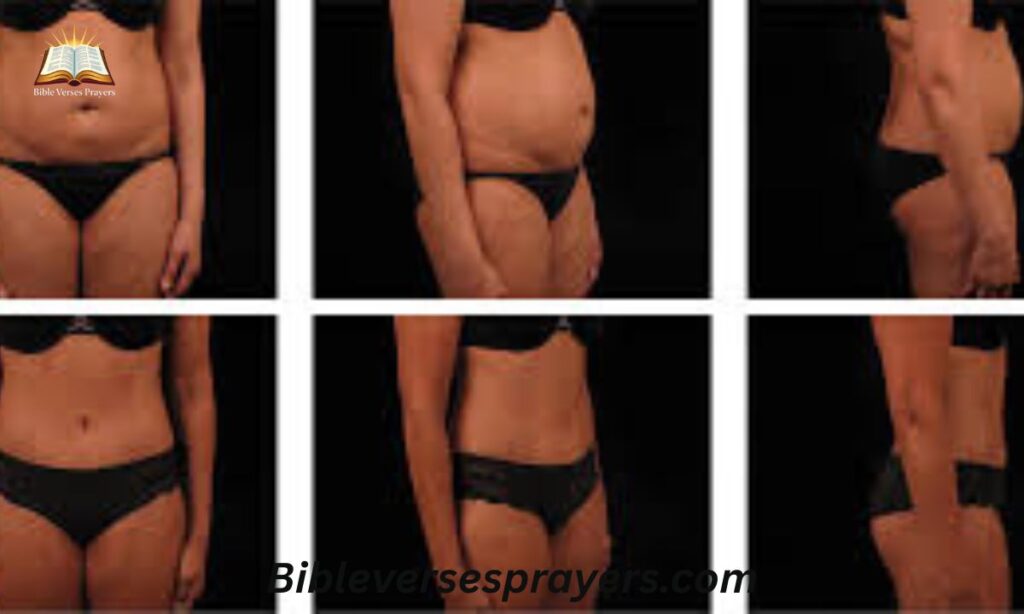The internet is full of acronyms and slang terms. FUPA is one term that has gained attention online. Many people have heard it but don’t know what it means.
The term appears in fitness discussions, social media posts, and casual conversations. FUPA stands for “Fat Upper Pubic Area” or “Fat Upper Pelvic Area.”
It refers to fat deposits in the lower abdomen region. This area sits just above the pubic bone. Both men and women can have a FUPA. It’s a completely natural and common body feature.
1. What Is FUPA? Understanding the Basics

FUPA describes the fatty tissue in the lower belly area. This region is located between the belly button and pubic area. Fat naturally accumulates here for many people. It’s a normal part of human body composition.
The Medical Perspective
From a medical standpoint, FUPA is subcutaneous fat. This means it sits just beneath the skin surface. It’s different from visceral fat which surrounds organs. Subcutaneous fat in this area is generally less harmful than visceral fat.
The lower abdomen is a common fat storage area. Genetics play a significant role in where bodies store fat. Some people naturally store more fat in this region. Hormones also influence fat distribution patterns throughout the body.
Doctors don’t typically consider FUPA a medical concern. It doesn’t usually indicate health problems by itself. However, overall body fat percentage matters for health. The presence of a FUPA alone isn’t a health indicator.
Why This Area Accumulates Fat
The pubic area is a natural fat storage zone. Evolution favored fat storage in this region for several reasons. It provided energy reserves and protected reproductive organs. Women especially store fat here due to hormonal influences.
Estrogen directs fat storage to the hips, thighs, and pubic area. This is why women often have more prominent FUPAs. Men can also develop fat in this area. Their fat distribution is typically influenced by testosterone levels.
Several factors contribute to fat accumulation here. Weight gain adds fat throughout the body including this area. Pregnancy can stretch the lower abdomen permanently. Aging slows metabolism which affects fat distribution. Genetics determine your body’s preferred fat storage locations.
Common Misconceptions About FUPA
Many people believe FUPA only affects overweight individuals. This isn’t true at all. Even thin people can have a FUPA. Body composition and genetics matter more than overall weight.
Another myth is that FUPA indicates poor health. Having fat in this area is completely normal. It doesn’t automatically mean someone is unhealthy. Health depends on many factors beyond appearance.
Some think FUPA can be easily eliminated. Unfortunately, spot reduction doesn’t work effectively. You cannot target fat loss in specific areas. Overall body fat reduction is the only proven method.
2. Why People Talk About FUPA
FUPA has become a topic of conversation for various reasons. Social media has amplified discussions about body types. Fitness culture often focuses on achieving flat stomachs. This attention has made people more aware of their lower abdomen.
Social Media and Body Image
Social media platforms showcase idealized body types constantly. Instagram and TikTok feature fitness influencers with flat stomachs. These images create unrealistic beauty standards for many people. Users compare themselves to these edited and curated photos.
The term FUPA gained popularity through online discussions. People started using it to describe their bodies. Some used it negatively while others reclaimed it positively. The conversation spread across fitness forums and body positivity communities.
Hashtags related to FUPA have millions of views. People share their experiences and concerns openly. This visibility has normalized conversations about body diversity. It’s helped many realize they’re not alone in having a FUPA.
The Body Positivity Movement
The body positivity movement has changed how people discuss FUPA. Activists encourage accepting all body types including FUPAs. They challenge unrealistic beauty standards promoted in the media. Many influencers now celebrate their natural bodies publicly.
Body positive content shows real, unedited bodies. People share photos of their FUPAs without shame. This representation helps others feel more comfortable. It reduces the stigma associated with natural body features.
The movement emphasizes that all bodies are valid. Having a FUPA doesn’t make someone less attractive. Beauty exists in diverse forms and sizes. This message resonates with millions struggling with body image.
Fitness Industry’s Focus
The fitness industry has traditionally promoted flat stomachs. Advertisements promise to eliminate belly fat quickly. Many products and programs specifically target this area. This marketing creates pressure to achieve perfect abs.
Workout programs often claim to “get rid of FUPA.” These promises are usually misleading or exaggerated. While exercise helps overall fitness, spot reduction is impossible. This creates frustration when results don’t match expectations.
However, some fitness professionals are changing their approach. They now promote health over appearance alone. They acknowledge that FUPAs are natural and normal. This shift helps create more realistic fitness goals.
| Common Reasons for FUPA Discussion | Impact on Conversation |
| Social media comparison | Increases insecurity |
| Body positivity movement | Promotes acceptance |
| Fitness marketing | Creates unrealistic expectations |
| Celebrity influence | Sets beauty standards |
| Medical information | Educates and normalizes |
3. Factors That Contribute to FUPA
Understanding what causes FUPA helps remove shame around it. Multiple factors influence fat accumulation in this area. Most are completely beyond personal control. Recognizing this reduces self-blame and promotes self-acceptance.
Genetics and Body Type
Genetics are the primary factor in fat distribution. Your genes determine where your body stores fat preferentially. Some people naturally accumulate fat in the lower abdomen. This is inherited from family members.
Body types also play a significant role. People with apple-shaped bodies store fat around their midsection. Pear-shaped individuals typically store fat in hips and thighs. These patterns are largely genetic and unchangeable.
Even at healthy weights, genetic predisposition remains. A naturally thin person might still have a FUPA. This proves it’s not always related to weight. Body diversity is natural and should be expected.
Pregnancy and Postpartum Changes
Pregnancy dramatically affects the lower abdomen area. The skin stretches to accommodate a growing baby. Muscles separate to make room for expansion. These changes are permanent for many women.
After childbirth, the lower abdomen often retains extra skin. Fat may accumulate in this stretched area. Diastasis recti (separated abdominal muscles) can create a FUPA appearance. These are normal postpartum body changes.
Many women develop a postpartum FUPA that persists. Exercise and diet may not completely eliminate it. The body has been permanently altered by pregnancy. This is a natural consequence of carrying a child.
Weight Fluctuations
Significant weight gain adds fat throughout the body. The pubic area naturally receives some of this fat. When people lose weight, this area often remains stubborn. It may be one of the last places to lose fat.
Yo-yo dieting makes this worse over time. Repeatedly gaining and losing weight affects skin elasticity. The lower abdomen becomes more prone to sagging. This can create or worsen a FUPA appearance.
Maintaining stable weight helps minimize these effects. However, some people will have a FUPA regardless. Weight management alone may not eliminate it completely. Body structure and genetics remain influential factors.
Hormonal Changes
Hormones significantly impact fat storage locations. Estrogen promotes fat storage in the pubic and hip areas. Changes in estrogen levels affect this distribution pattern. This explains why FUPAs are common in women.
Menopause brings major hormonal shifts in women. Declining estrogen changes where fat is stored. More fat may accumulate in the abdominal region. This creates or worsens FUPA for many women.
Men experience hormonal changes too as they age. Declining testosterone can increase abdominal fat storage. This affects the overall body composition gradually. Hormonal balance plays a crucial role in body shape.
Aging and Metabolism
Aging naturally slows down metabolism over time. The body burns fewer calories at rest. This makes weight management more challenging with age. Fat tends to accumulate more easily in problem areas.
Skin loses elasticity as we get older. This affects how the lower abdomen appears. Even without gaining weight, the area may look different. Sagging skin can create or emphasize a FUPA.
Muscle mass decreases with age if not maintained. Less muscle means lower metabolic rate overall. This combination makes FUPA more common in older adults. It’s a natural part of the aging process.
4. Can You Get Rid of FUPA?

Many people want to reduce or eliminate their FUPA. The truth is complicated and depends on individual factors. Some people can reduce it significantly through lifestyle changes. Others may find it persists despite their best efforts.
Diet and Nutrition
Proper nutrition helps reduce overall body fat percentage. Creating a caloric deficit leads to fat loss. However, you cannot choose where fat disappears first. The body decides based on genetics and hormones.
A balanced diet supports healthy weight management. Focus on whole foods, lean proteins, and vegetables. Avoid excessive processed foods and added sugars. Adequate protein helps maintain muscle mass during weight loss.
Sustainable eating habits matter more than crash diets. Quick fixes rarely work long-term for body composition. Gradual changes lead to lasting results over time. Patience is essential when working toward body goals.
Exercise and Physical Activity
Regular exercise helps burn calories and build muscle. Cardiovascular exercise increases overall calorie expenditure significantly. Strength training builds muscle which boosts metabolism. Both types of exercise support fat loss goals.
Core exercises strengthen abdominal muscles underneath the fat. While this doesn’t eliminate FUPA directly, it improves overall appearance. Stronger muscles can provide better support and definition. However, spot reduction through exercise doesn’t work.
Consistency matters more than intensity in exercise routines. Regular moderate activity beats sporadic intense workouts. Find activities you enjoy to maintain long-term habits. Exercise should be sustainable and enjoyable for best results.
Medical and Surgical Options
Some people consider surgical options for FUPA removal. Liposuction can remove fat from the pubic area. Tummy tucks (abdominoplasty) remove excess skin and fat. These procedures come with risks and significant costs.
Surgery should be considered carefully and as a last resort. Recovery time can be lengthy and uncomfortable. Results aren’t always perfect or permanent without maintenance. Not everyone is a good candidate for these procedures.
Non-surgical treatments are also available in some cases. CoolSculpting and similar technologies claim to reduce fat. Results vary significantly between individuals and procedures. These options are expensive with modest results typically.
The Reality of Spot Reduction
Spot reduction is largely a myth in fitness. You cannot target fat loss in specific areas. The body loses fat based on genetics and hormones. This means FUPA might be one of the last areas to reduce.
When losing weight, fat comes off throughout the body. Some areas lose fat faster than others naturally. The lower abdomen is notoriously stubborn for many people. This can be frustrating but is completely normal.
Accepting this reality helps set realistic expectations. Focus on overall health rather than specific body parts. Appreciate progress in other areas while being patient. Some people will always have a FUPA regardless of effort.
5. Changing Attitudes Toward FUPA
Public perception of FUPA is evolving gradually over time. More people are challenging traditional beauty standards openly. Body diversity is becoming more accepted and celebrated. This shift is creating healthier attitudes toward natural bodies.
Media Representation
Traditional media rarely showed diverse body types historically. Everyone on screen had flat stomachs and perfect figures. This created unrealistic expectations for average people. It made natural body features seem abnormal or undesirable.
Modern media is slowly becoming more inclusive. Plus-size models and actors are gaining visibility. Unedited photos are becoming more common in advertising. This representation helps normalize different body types including FUPAs.
Social media has accelerated this change significantly. Regular people share their real bodies online daily. This democratization of representation is powerful and important. It shows that beauty exists beyond traditional narrow standards.
Celebrity Influence
Some celebrities have spoken openly about their FUPAs. They share unedited photos showing their natural bodies. This vulnerability helps fans feel less alone. It challenges the myth that celebrities have perfect bodies.
When public figures normalize having a FUPA, it reduces stigma. Fans realize that even famous people have this feature. It helps people understand that FUPAs are common and normal. This representation is valuable for public perception.
However, celebrity influence cuts both ways sometimes. Some still promote unrealistic body standards through editing. This mixed messaging can be confusing for audiences. Critical media literacy remains important when consuming content.
The Role of Health Professionals
Health professionals are emphasizing health over appearance alone. They discourage obsessing over specific body parts like FUPA. Instead, they promote overall wellness and sustainable habits. This approach is healthier mentally and physically.
Doctors recognize that body diversity is natural and healthy. Not everyone needs or should achieve a flat stomach. Health markers matter more than appearance for wellbeing. This professional guidance helps shift public attitudes positively.
Mental health professionals also address body image concerns. They help people develop healthier relationships with their bodies. Accepting natural features like FUPA improves mental health. Therapy can be valuable for those struggling with body acceptance.
Final Thoughts
FUPA is simply a natural part of many people’s bodies. It’s influenced by genetics, hormones, pregnancy, and aging. Having a FUPA doesn’t indicate poor health or lack of discipline. It’s a normal variation in human body composition.
Society is slowly becoming more accepting of diverse body types. The body positivity movement has helped reduce stigma significantly. More people are learning to appreciate their natural bodies. This cultural shift is important for collective mental health.
While some people may choose to reduce their FUPA, acceptance is equally valid. Not every body feature needs to be changed or fixed. Health and happiness matter more than achieving perfect aesthetics. Your worth isn’t determined by your lower abdomen appearance.
Frequently Asked Questions
Is having a FUPA unhealthy?
No, having a FUPA is not inherently unhealthy. It’s a natural fat storage area that doesn’t indicate poor health by itself.
Can exercise completely eliminate my FUPA?
Not necessarily. Exercise helps reduce overall body fat, but genetics determine where you lose fat first. Some people will always have a FUPA.
Is FUPA more common in women or men?
Women tend to have more prominent FUPAs due to hormonal factors. However, men can also develop fat in this area, especially with age.
Why does my FUPA remain after weight loss?
The lower abdomen is often one of the last areas to lose fat. Genetics and hormones determine fat loss patterns, making this area stubborn.
Are there clothes that hide FUPA better?
High-waisted pants and structured fabrics can smooth the lower abdomen. However, wearing what makes you comfortable is most important regardless of appearance.






